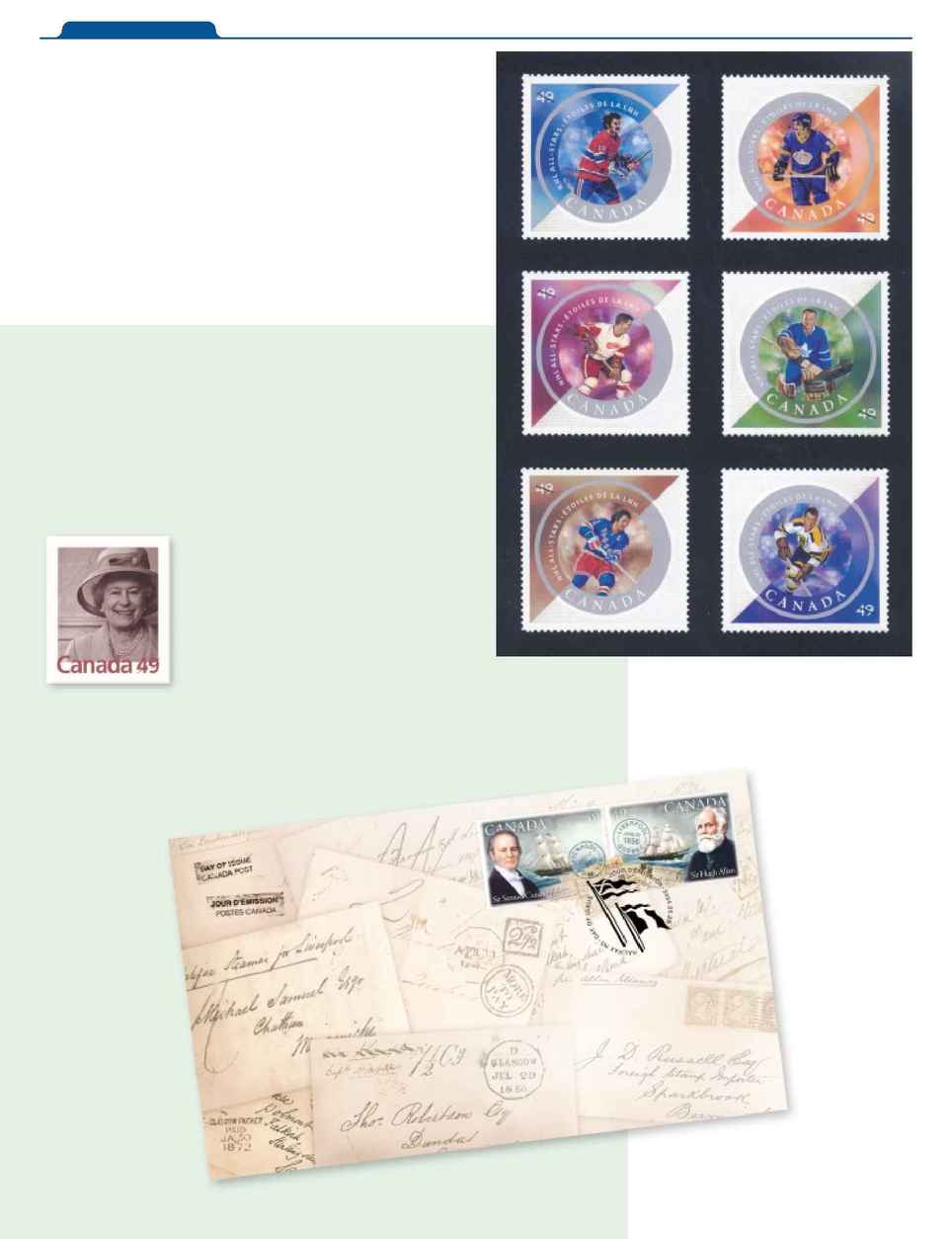
Staccato
PRINTACTION April 2004
30
O
n July 4, 1840, the first of Samuel Cunard's
new steamers, Britannia, sails from Liverpool
and arrives at Halifax on 17 July. A year earlier,
Cunard had signed a contract for the first steam
packet service between Britain and North America.
Canada Post will celebrate the exploits of the ship-
ping magnate, as well as those of Sir Hugh Allen,
with an issue of new stamps at the Royal 2004
Royale, set for Halifax at the end of May.
These stamps are being produced by The Lowe-
Martin Group. Stamp
production is well-suited
for10-micron screening
because of the detail that
can be achieved in such
small designs. Many
companies moving into
high-end screening have
worked specifically with
stamps to test their
wears. This includes
Datachrome, which actu-
ally began using stochastic to produce stamps
when film was the prepress option.
With the arrival of CTP and the ability to con-
stantly produce line screens above 500 lpi, the
stamps can afford more detail in their design.
Canada is internationally renown for the quality of
its stamps, as seen by these upcoming shipping
magnate issues. The stamps are designed by
Page & Wood Inc. There
will be an initial
run of four million
each, on Tullis
Russell Coatings,
using five colours
plus two varnishes
and a pressure sen-
sitive gumming.
But perhaps more
importantly, the
stamps make note of
two of Canada's
greatest shipping
magnates. Samuel
Cunard was born in
Halifax in November
of 1787. After working
with his father in the
timber trade, he co-
founded the Halifax
Banking Company in
1939 and submitted to
the British government
the idea to start regular
transatlantic mail servic-
es. Steamships would hit
the points of Liverpool and
Halifax, as well as Quebec
City and Boston, at a cost
of around 55,000 pounds
per year.
Sixteen years later, Sir
Hugh Allan established a
similar transatlantic mail
route between Canada and
Britain. Allan had emigrat-
ed to Canada in 1826 and
settled in Montreal where
he found work as a mail
clerk. Ten years later, fami-
ly funding allowed him to
buy steamships. He per-
suaded the Canadian gov-
ernment to finance his
transatlantic lines to carry
the mail. But it would take
him another three years to win the contracts from
competitors.
Canada Post receives hundreds of stamp sug-
gestions every year. The Stamp Advisory
Committee, consisting of people from across
Canada with an expertise in Canadian culture
and/or stamp collecting, examine all suggestions
and then decide on the annual stamp program
for the coming year.
Stamp Staccato
This sounds easy because Lowe-Martin has taken
great pains to eliminate what Moodie refers to as mov-
ing targets in the pressroom. Before running the test
pattern, they had plugged house standards into the
press. "We are talking about a Delta that is +/- 2. The
standard in the industry is in excess of five. We said,
`OK, we have to maintain control of this, so how good
can we get it.'"
This statistical process control was then taken to
another level by demanding that a job never run more
than 10 per cent out of specification. With this control
layered underneath an already near-impossible target
of Delta +/-2, the prospect for developing such toler-
ances in the workflow would leave many printers happy
to produce screens at the
conventional 150 to 175 lines
per inch.
"In the beginning, people
think it is all the press," says
Jim Ronald, president of
Montreal-based Datachrome
Inc. "They say it can't run on
their press because a deck
doesn't run well, and so on.
Well, if you are running a
150- or 200-line job everyday
there shouldn't be any differ-
ence."
Datachrome's position in the stochastic world enjoys
a very unique view that is built on top of plate-centric
experience unequalled in the Canadian market. Ronald
rebukes claims made about setting press profiles
because he believes few printers actually do the blue-
printing. Before buying a printing company three years
ago, Datachrome was a prepress firm that worked in the
troubled days of stochastic
print, the early to mid
1990s, when film-based
workflow ruled the Earth.
The company cut its
teeth on colour curves
that could present a 25
per cent dot on film only
to later turn it into a 55
per cent dot on the plate.
Datachrome was not
only working with
filmed-based stochastic
for commercially run
plates, it was working
for companies like
Canadian Bank Note
and Ashton Potter.
Imagine how small
and detailed those
Canadian postage
stamps must have
seemed to those
making plates for
their production.
"We also supply
plates in stochastic
to printers that have never
printed stochastic," says Ronald. "This goes against
the traditional idea that the printer has blueprinted his
presses. Our plates and files run better on their presses
